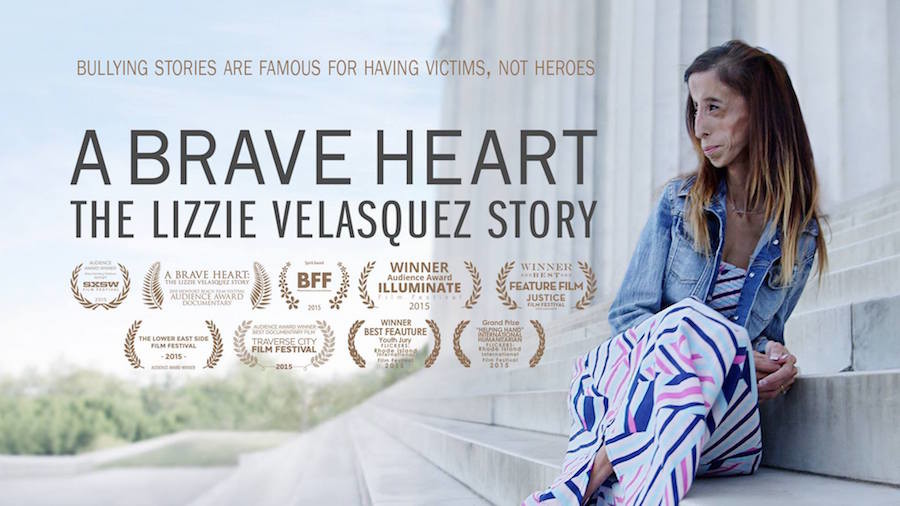‘A Brave Heart: The Lizzie Velasquez Story’ sidesteps pity
A documentary which follows 26-year-old, 58-pound Lizzie, born with a rare syndrome that prevents her from gaining weight.
September 23, 2015
“A Brave Heart: The Lizzie Velasquez Story” is a documentary directed by Sara Hirsh Bordo about how a victim of vicious cyberbullying became an anti-bullying activist.
The first part of the documentary shows Lizzie’s life before she became famous. Lizzie uses completely direct and unflinchingly honest language to tell her tale. She was born with a condition that makes her unable to gain almost any body fat; the condition is so rare that she has not yet been diagnosed. She details the many surgeries that she had to undergo, as well as the difficulties of being partially blind. When she started school, some children were scared of her, but as she grew up she won over those around her with her kindness. Considering how rare it is for people in documentaries to talk without self-pity and resentment, the sincerity with which she and her parents share their story is compelling.
The movie later splits off in several, somewhat random directions. Part of the film recounts Lizzie’s troubles with cyberbullying. She was called “the ugliest woman in the world” on YouTube in a video viewed by millions. She later made a YouTube channel of her own, which she devoted to speaking out against bullying. Her story and YouTube channel gained enough popularity for Lizzie to become a guest on the talk show circuit. When compared to the heartfelt opening, these scenes seemed tainted with commercialism and publicity stunts. It’s hard to take a message about inner beauty as seriously when it is spoken on shows that herald celebrities known exclusively for their looks.
The film also documents her struggles to find treatment for her condition. Lizzie and her family remain brave when discussing the troubles, but a reality show cinematography permeates the sincerity of the scene. This is largely due to the editing, which, like the rest of the technical aspects of this film, is only TV-quality. While this was fine in describing backstory, the simplicity feels out of place in the more suspenseful scenes.
The last plot arc deals with Lizzie’s trip to Washington D.C. to lobby for an anti-bullying law, which is never explained in detail, debated, or discussed. These scenes are the least developed in the film because they call for a much more different tone than the colloquial one used thus far in the documentary. As long as the story focused on Lizzie’s attempts to live her life, this simple and good-natured tone worked, but to argue for an anti-bullying law, a more academic tone is needed.
While the documentary uses clichés to draw in viewers, in the end, it manages to send a sincere and empowering call to action against cyberbullying. Lizzie’s story is part of the movement towards a more tolerant society.
“A Brave Heart: the Lizzie Velasquez Story” will be released on Sept. 25.
Email Tony Schwab at [email protected].
























































































































































